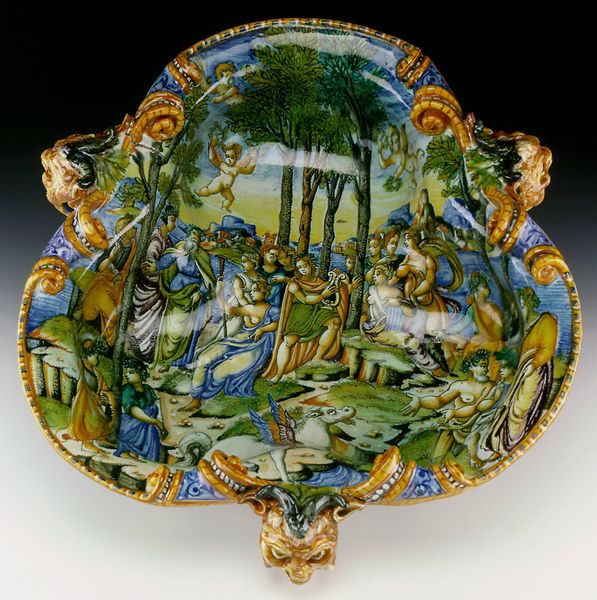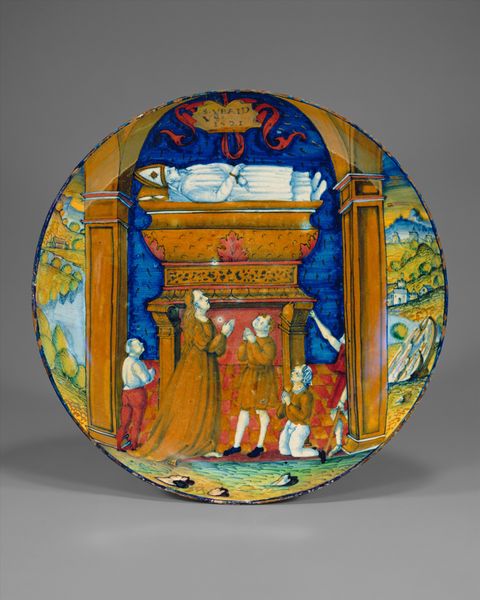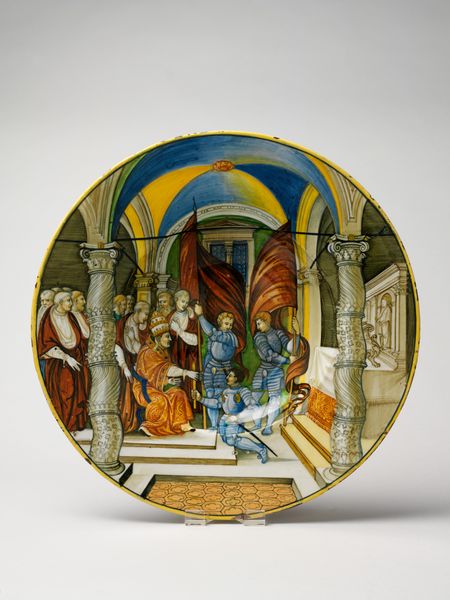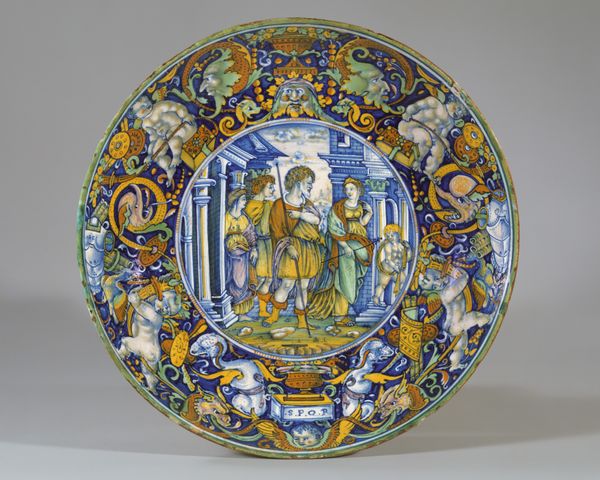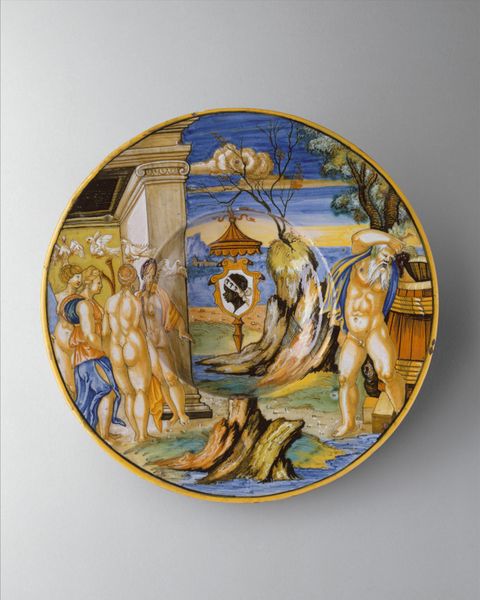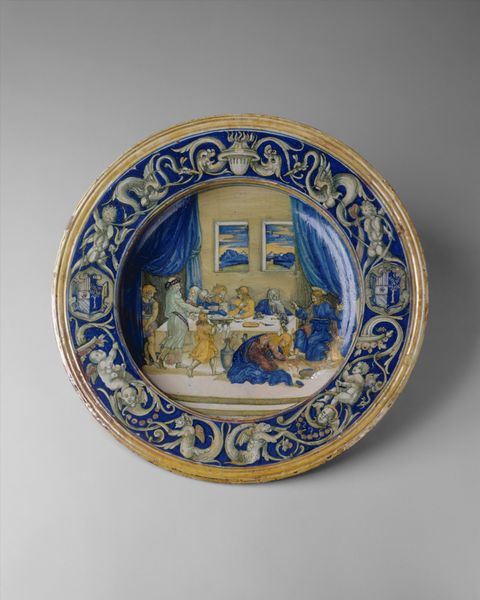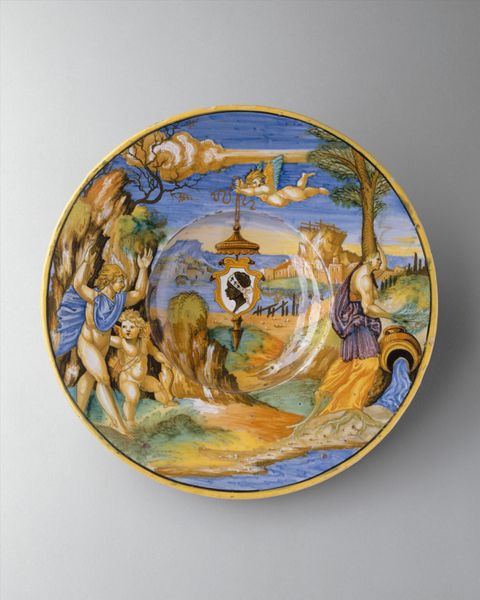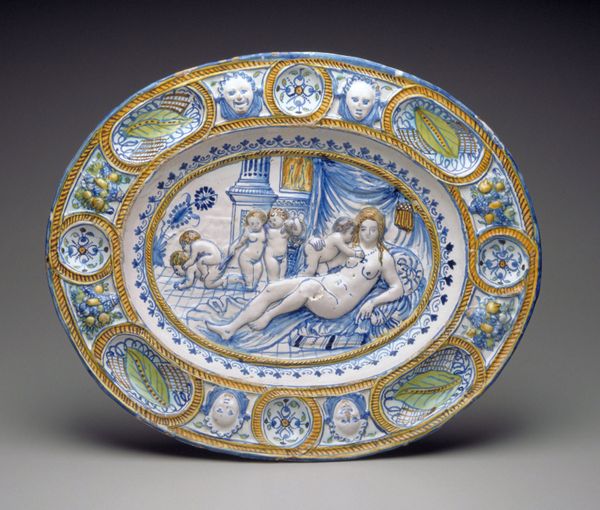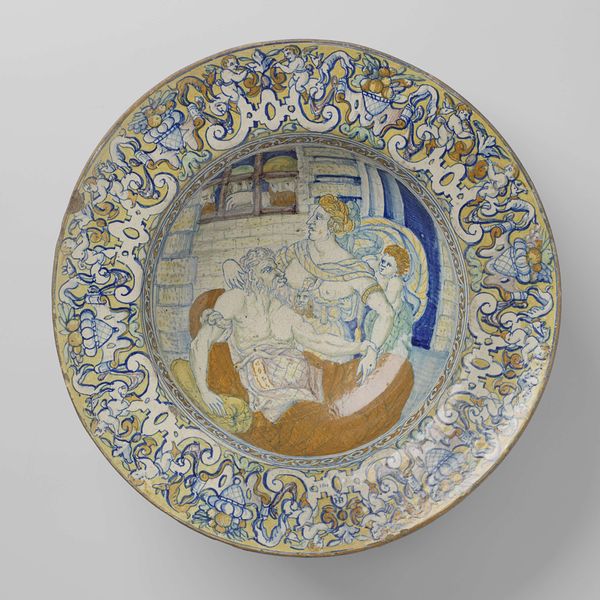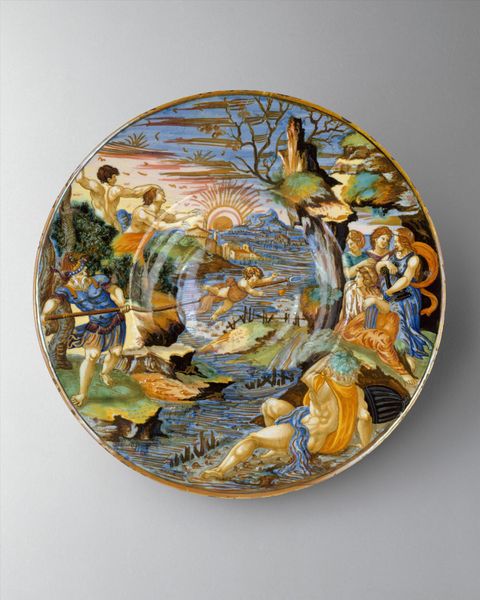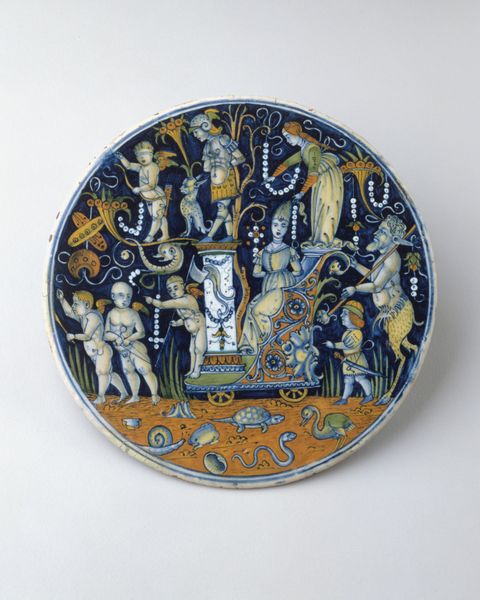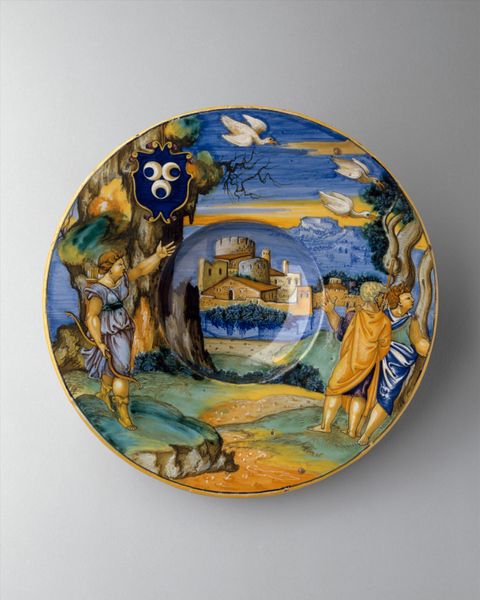
Charger with the Massacre of the Innocents c. 1527 - 1530
0:00
0:00
tempera, ceramic
#
narrative-art
#
tempera
#
ceramic
#
figuration
#
11_renaissance
#
history-painting
#
decorative-art
#
italian-renaissance
#
decorative art
Dimensions: overall (height by diameter): 5.3 × 48.9 cm (2 1/16 × 19 1/4 in.)
Copyright: National Gallery of Art: CC0 1.0
Editor: This striking ceramic plate, titled "Charger with the Massacre of the Innocents" by Francesco Xanto Avelli, created sometime between 1527 and 1530, immediately evokes a sense of chaos and violence. The composition feels incredibly dynamic, packed with figures in motion. What key symbolic meanings or interpretations might someone draw from this? Curator: It's fascinating how the emotional weight of such a horrific event translates into a visually decorative object, isn't it? Think about the charger itself, typically used for serving. Juxtaposing such beauty with infanticide invites contemplation of the relationship between aesthetics and morality. The very act of depicting such barbarity on a functional item intended for domestic use reveals, perhaps, a societal acceptance, or at least desensitization, to violence in the 16th century. Do you notice the architectural elements? Editor: Yes, I see the classical architecture – columns, arches. It looks like they are set against the backdrop of an Italian city. How do these elements add to the interpretation? Curator: Exactly! The classical backdrop isn't just decorative; it evokes Roman power and order disrupted by this biblical event. This clash speaks to the fragility of civilization. Furthermore, observe how Avelli used colour; it isn't purely naturalistic, is it? Editor: No, there is an almost heightened quality, like an illuminated manuscript, particularly the blues and golds. Is that linked to cultural memory? Curator: Precisely! It suggests a desire to elevate the horror, transforming the terrible act into a visually stunning cautionary tale. It is almost as if Avelli seeks to immortalize this narrative and its inherent warning in vibrant colours. In effect, the artwork functions like an elaborate 'memento mori', reminding its viewer about the fleeting nature of innocence and life itself. Editor: That's a really interesting insight, contrasting beauty and horror in that way! I hadn't considered how much the colors and classic architecture contributed. Curator: The impact is amplified, precisely, in its circular composition: the inescapable recurrence of historical atrocities. Seeing such events immortalized reminds us how essential cultural memory is in averting them.
Comments
No comments
Be the first to comment and join the conversation on the ultimate creative platform.
